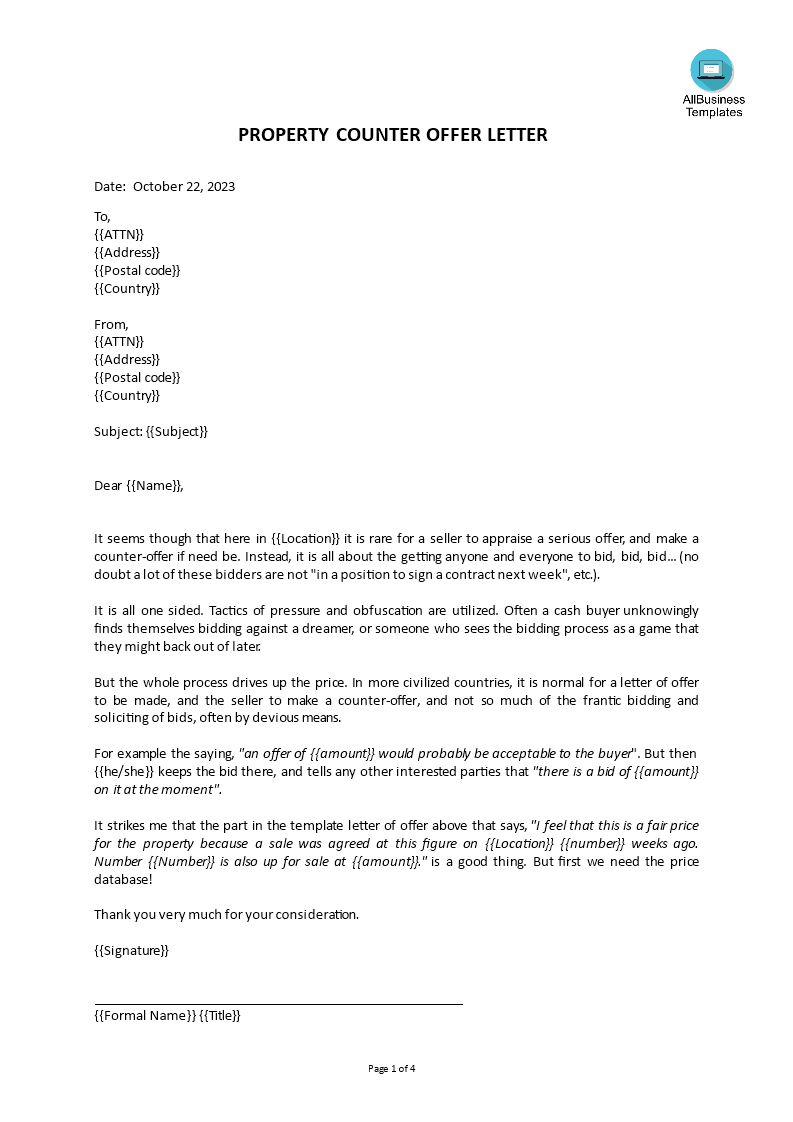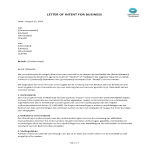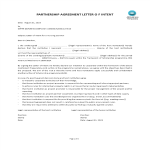Sample Counter Offer Letter For Property
Save, fill-In The Blanks, Print, Done!

Download Sample Counter Offer Letter For Property
Microsoft Word (.docx)Or select the format you want and we convert it for you for free:
- This Document Has Been Certified by a Professional
- 100% customizable
- This is a digital download (32.4 kB)
- Language: English
- We recommend downloading this file onto your computer.
How to write a counteroffer for the sale of property as a government to a house owner? How do you proceed if the buyer does not respond to your counteroffer? Download our sample template which is designed to guide you through the process of negotiating a property offer. They will help you determine what to offer and when to offer it.
A Counter Offer Letter for property is a written response to a real estate purchase offer. When a seller receives an initial offer from a potential buyer, they can choose to either accept, reject, or make a counteroffer in response to the terms and conditions presented in the original offer. A counteroffer letter is a formal document used by the seller to propose different terms, such as price, closing date, or other conditions, as a way to negotiate the sale of a property.
Here are the key components typically included in a Counter Offer Letter for property:
- Seller's Information: The name, contact information, and any relevant details about the seller.
- Buyer's Information: The name of the buyer or their representative, contact information, and any relevant details about the buyer.
- Property Information: A clear description of the property, including its address, legal description, and any specific terms related to the property's sale.
- Original Offer: Reference the initial offer that is being countered, including the date the offer was received, the proposed purchase price, and any other terms specified in the original offer.
- Counter Offer Terms: Outline the revised terms and conditions being proposed by the seller. This may include a different purchase price, changes to the closing date, financing conditions, contingencies, or any other terms being modified.
- Expiration Date: Specify the date and time by which the buyer must respond to the counteroffer. Counter offers typically have a time limit to encourage timely responses.
- Acceptance and Signature: The seller's signature, which indicates their formal acceptance of the counteroffer terms.
- Communication: Provide instructions on how the buyer should accept or decline the counteroffer, which may include signing and returning the counteroffer letter.
- Closing Statement: Include a closing statement or statement of goodwill to maintain a positive tone throughout the negotiation process.
A Counter Offer Letter is an important part of the negotiation process in a real estate transaction. It allows the seller to respond to the buyer's initial offer while presenting terms that better align with their preferences and expectations. The negotiation process may involve several rounds of counteroffers until both parties come to a mutual agreement on the terms of the sale.
It's essential for both parties involved in a real estate transaction to maintain a professional and respectful tone in their communications during the negotiation process. Clear and well-drafted counteroffer letters help ensure that the terms of the sale are mutually agreed upon before finalizing the transaction.
Download this example of a Government Counter Offer Letter For Property template and save yourself time and effort! You will see completing your task has never been simpler!
DISCLAIMER
Nothing on this site shall be considered legal advice and no attorney-client relationship is established.
Leave a Reply. If you have any questions or remarks, feel free to post them below.
Related templates
Latest templates
Latest topics
- Excel Templates
Where do I find templates for Excel? How do I create a template in Excel? Check these editable and printable Excel Templates and download them directly! - Blank Staff Paper
Are you in search of pristine music staff sheets to capture the essence of your new compositions? Check our free blank Staff Paper templates here. - Cornell Notes
What is Cornell note template? How do you structure Cornell notes? Check out these Cornell notes templates here. - GDPR Compliance Templates
What do you need to become GDPR compliant? Are you looking for useful GDPR document templates to make you compliant? All these compliance documents will be available to download instantly... - Easter Templates
What is the true meaning of Easter? Check out some fun facts about the Easter Bunny and download nice Easter templates here.
cheese



